Drought-hit California farmers abandoning vegetable fields
Last Updated: Monday, January 26, 2009 10:48 AM ET
The Associated Press
Consumers may pay more for spring lettuce and summer melons in grocery stores now that California farmers have started abandoning their fields in response to a crippling drought.California's sweeping Central Valley grows most of the fruits and vegetables in the United States in normal years, but this winter thousands of hectares are turning to dust as the state hurtles into the worst drought in nearly two decades.Federal officials' recent announcement that the water supply they pump through the nation's largest farm state would drop further was enough to move John (Dusty) Giacone to forego growing vegetables so he can save his share to drip-irrigate 400 hectares of almond trees."Taking water from a farmer is like taking a pipe from a plumber," said Giacone, a fourth-generation farmer in the tiny community of Mendota. "How do you conduct business?"The giants of California agribusiness are the biggest economic engine in the valley, which produces every cantaloupe on store shelves in summer months, and the bulk of the nation's lettuce crop each spring and fall.This year, officials in Fresno County predict farmers will only grow around 2,400 hectares of lettuce, roughly half the area devoted to growing greens in 2005.That alone could cause a slight bump in consumer prices, unless lettuce companies can make up for the shortage by growing in areas with an abundant water supply, or the cost of cooling, packaging and shipping the crop suddenly goes down, experts say."Lettuce comes off the field and goes straight into the market, and if there's nothing coming off the field then the marketing chain goes dry, and prices go up," said Gary Lucier, an agricultural economist with the U.S. Department of Agriculture's Economic Research Service.
Restricted flow to California also hits farmers
While the dry weather has exacerbated the problem, farmers' water woes are not all drought-related.Supplies for crops and cities also have been restricted by several court decisions cutting back allocations that flow through a freshwater estuary called the Sacramento-San Joaquin Delta, the main conduit that sends water to nearly two-thirds of Californians.Environmental groups and federal scientists say the delta's massive pumps are one of the factors pushing a native fish to the brink of extinction. Last year, federal water deliveries were just 40 per cent of the normal allocations, fallowing thousands of hectares and causing nearly $309 million US in crop losses statewide.That prompted California Gov. Arnold Schwarzenegger to issue a disaster declaration, ordering state water managers to expedite any requests to move water around the state, in part so high-value crops like wine grapes, almonds and pistachio trees would stand a chance of surviving.Federal reservoirs are now at their lowest level since 1992.With such a grim outlook, many California farmers including Giacone are investing millions to drill down hundreds of metres in search of new water sources.Depending on how much it rains this winter, federal water supplies could be slashed down to nothing this year, forcing farmers to rely solely on brackish well water. But the U.S. Bureau of Reclamation won't make an official decision until late February, said Ron Milligan, the agency's Central Valley operations manager.
Concerns over possible job losses
The state's Department of Water Resources, which also ships farmers water, has promised to deliver 15 per cent of the normal allocations in October, but conditions are so dire that that's now in doubt, too."The consequences are expected to be pretty horrible in terms of farmers' revenue, but what's really disconcerting are the possible job losses," said Wendy Martin, who leads the agency's drought division. "Those communities that can least weather an economic downturn are going to be some of the places that are hit the hardest."Richard Howitt, a professor of agriculture economics at the University of California, Davis, estimates that $1.6 billion US in agriculture-related wages, and as many as 60,000 jobs across the valley will be lost in the coming months because of dwindling water.Analysts haven't yet provided any estimates of crop losses this year. But Bill Diedrich, an almond grower on the valley's parched western edge, said he's already worried he may lose some of his nut trees in the drought."The real story here is food security," Diedrich told Milligan and other officials speaking at a conference in Reno, Nev. "It's an absolute emergency and anything to get water flowing quickly is needed."In the meantime, the forecast appears to be worsening: meteorologists are predicting a dry spring, and a new state survey shows the population of threatened fish is at its lowest point in 42 years, more imperiled than previously believed."This has devastating effects not only for the guys out there in the fields with the weed whackers, but it affects the whole farming industry," said Thomas Nyberg, Fresno County's deputy agricultural commissioner. "I'm just praying for rain."
© The Canadian Press, 2009
SUPPORT YOUR LOCAL FARMER
Tuesday, January 27, 2009
Subscribe to:
Post Comments (Atom)




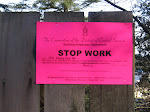
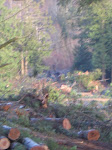

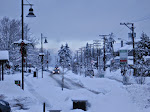


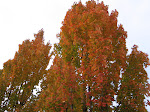






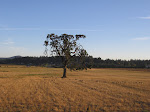


No comments:
Post a Comment